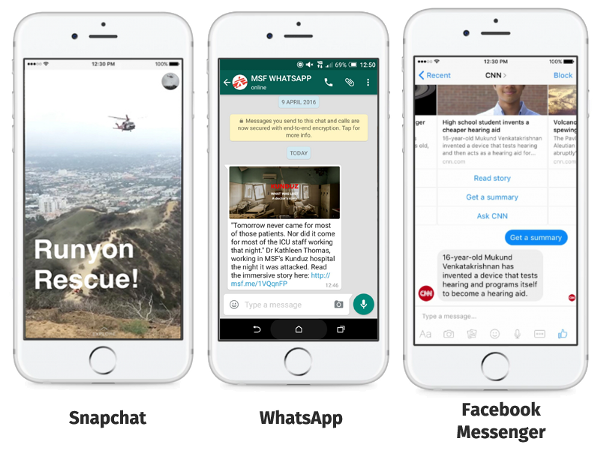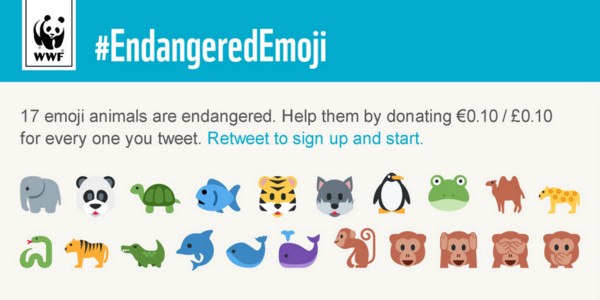We’re pleased to feature a guest post by Laurie Ainley, the founder of Donative, a startup working with charities to inspire a new generation of giving through bite-sized storytelling.
Technology moves at such a pace that it can be a full time job just trying to separate the substance from the hype. However, along with the plethora of tools and services that emerge on a daily basis comes the opportunity for charities to use them to inspire people to support their causes in innovative and compelling ways. In the wake of the Etherington review, and with the introduction of the Fundraising Preference Service looming, there is a clear opportunity to explore new digital fundraising techniques.
So below I’ve set out to explore the reasons why I’m positive about the future of online fundraising!
- The Online Opportunity
Let’s start with the macro view. Online giving is on the rise, and with increasing restrictions on street, telephone and direct mail fundraising, now is a great chance to test a channel with low distribution costs, personalisation at scale, fine-grained targeting, two-way communication and rich, evocative content.
Building super-engaged audiences through more direct approaches.
- Super-Engaged Audiences
Now more than ever we have the tools to be able to create extremely engaged audiences from our supporters.
Whether it’s using Snapchat Stories to regularly send followers bite-sized visual stories, broadcasting updates to your supporters with WhatsApp, or building a Facebook Messenger bot to leverage the (alleged) conversational interface of the future, cultivating a close relationship with donors has never been easier.
- Storytelling Tools
There has been a proliferation of tools to construct beautiful and compelling stories with at low (or no cost). A service like Storify can be used to curate social media posts from volunteers and wrap them up into a narrative. Canva makes it simple to spread your message with consistent branding while Infogr.am makes it easy to visualise data in infographic format.
If you happen to have $400/month spare (minimum), you can even use Shorthand to communicate rich interactive stories of impact as Save The Children have.
WWF’s #EndangeredEmoji campaign
- Creative Formats
With more ways for people to express themselves comes more opportunities to adapt them for your organisation’s purpose. The WWF’s #EndangeredEmoji campaign is a great example of how to take a popular medium and raise both money and awareness.
Meanwhile, charity: water’s collaboration with Within (formerly Vrse) leverages rapidly emerging VR technology to immerse viewers in a world that few would recognise.
The Source, a 360° virtual reality film produced by Within for charity: water?—?drag on the video to look around
- Payment Mechanisms
Where once upon a time it was a laborious task to integrate a payment processor into a website or app, fortunately these services have significantly matured. Indeed, card payment processor Stripe have managed to propel themselves to widespread adoption on the promise of simplicity. Similarly, GoCardless facilitate simple Direct Debit collection, while other companies such as Charity Checkout offer tailored solutions for the charity sector.
However beyond this lies further exciting innovations?—?while Bitcoin may still yet to have found mainstream adoption, the potential for blockchain technology to improve transparency to donors is an exciting prospect.
You can also bet that major platforms and social networks will be making strides to incorporate low friction payments into their offerings.
- Viral Content
The Salvation Army’s take on #thedress
While the first thing that springs to mind when ‘viral’ and ‘charity’ are uttered in the same sentence is the Ice Bucket Challenge, there are many other ways to achieve wide reach. As the Salvation Army showed by producing a campaign around the viral #thedress conundrum, it’s possible to tap into a large audience by piggybacking on topical subject matter.
Every other week brings a new viral or meme (think Damn, Daniel, The Running Man Challenge, Hold the Door) to be subverted to draw attention to your cause. And to demonstrate the scale of these opportunities, Candace Payne’s internet-breaking Chewbacca mask video accrued an astonishing 77 million views in 24 hours (now standing at over 150 million). Alas, the RSPW (Royal Society for the Protection of Wookiees) didn’t pounce upon this opportunity to raise money for persecuted residents of the planet Kashyyyk.
- Influencers
Refuge worked with Lauren Luke to give a different take on make up tutorials.
Influencers have made their mark across every social platform, from YouTube to Vine, Instagram to Pinterest (‘Pinfluencers’, in case you were wondering). In an incredibly prescient move, the RNLI successfully demonstrated as early as 2009 how to use influencers to access a whole new set of audiences, previously untouched by the charity. In the best cases, asking a creative person with an audience that idolises them to co-produce a campaign promoting a cause they are passionate about can deliver amazing results.
- Video
“Your mobile phone is a fully-fledged film-making suite”. Unbeknownst to most people, with the help of just one reasonably priced app, it’s possible to film, edit and upload videos entirely from your phone. Just check out iMovie on iOS and KineMaster or VivaVideo on Android.
And the underlying trend that makes this format more viable is that the opportunity to grab someone’s attention is getting shorter?—?with a Facebook video that stands at somewhere between 3 and 10 seconds. But fortunately, where production values were once king, nowadays people are more tolerant of rawness in the name of authenticity.
Hope For Paws’ compelling rescue of Jordan has accumulated over 7 million views.
That’s not to say long form is be abandoned— even on a basic budget it’s possible to create moving pieces such as Hope For Paws’ rescue video that reach millions of people.
- Startup Ecosystem
It would be remiss of me not to mention the role of startups in bringing about exciting new innovations to the sector. JustGiving started off that way over 15 years ago and has managed to make a pretty decent impact on the sector since. I’m sure some people suffer from startup fatigue?—?and it’s well known that the majority of startups fail?—?but innovation wouldn’t happen at the rate of knots it does without the proliferation of companies trying different approaches (think evolution without natural selection).
So the positive news is that there are lots of startups testing plenty of ideas that could well become the next JustGiving. In London alone over the last few months, I’ve seen lots of exciting ideas emerging: Alice.si, Kickr and Pledgit for starters.
- Donors are People
Finally, and perhaps most importantly, is the opportunity to treat donors as what they are: people. People have relationships, and people have influence over through relationships. The long held belief in the power of word of mouth is even more applicable when the number of opportunities to spread that word is greater than ever in the always-connected online (and mobile) world. Treating donors as channels means looking beyond pure financial capital and instead leveraging lucrative social capital as well.
Social referral underpins JustGiving’s success as a event fundraising platform, with an extra £4.50 generated on average for each share to Facebook by a donor.
Taylor Conroy, founder of Change Heroes, explains the origins of the platform.
Change Heroes exploits this to the max by enabling people to record a video urging their friends to donate as a group to support a particular cause, wrapped up in a great overall experience. Doing so enables them to increase the average crowdfunding gift from $64 to $250 by being so highly personal.
It’s also the opportunity to reach a fresh audience that traditionally may be inaccessible to an organisation. In the US, Classy estimate that of the 7 donors on average that donate to a campaign, 4 are fresh supporters.
Charities have the opportunity to leverage new tools to connect with supporters in ever more personal and meaningful ways. While innovative technologies and formats inherently have associated risks, without testing out new approaches, supporters’ evolving needs will be ignored, leaving them disengaged and disenchanted.
The positive news is that digital services tend to be cheaper and quicker to trial than physical counterparts, so even a small innovation budget can go a long way. So why not pick a tool to run a small scale experiment with today?
What excites you (or perturbs you) about the future of online fundraising? Leave a comment with your thoughts!



